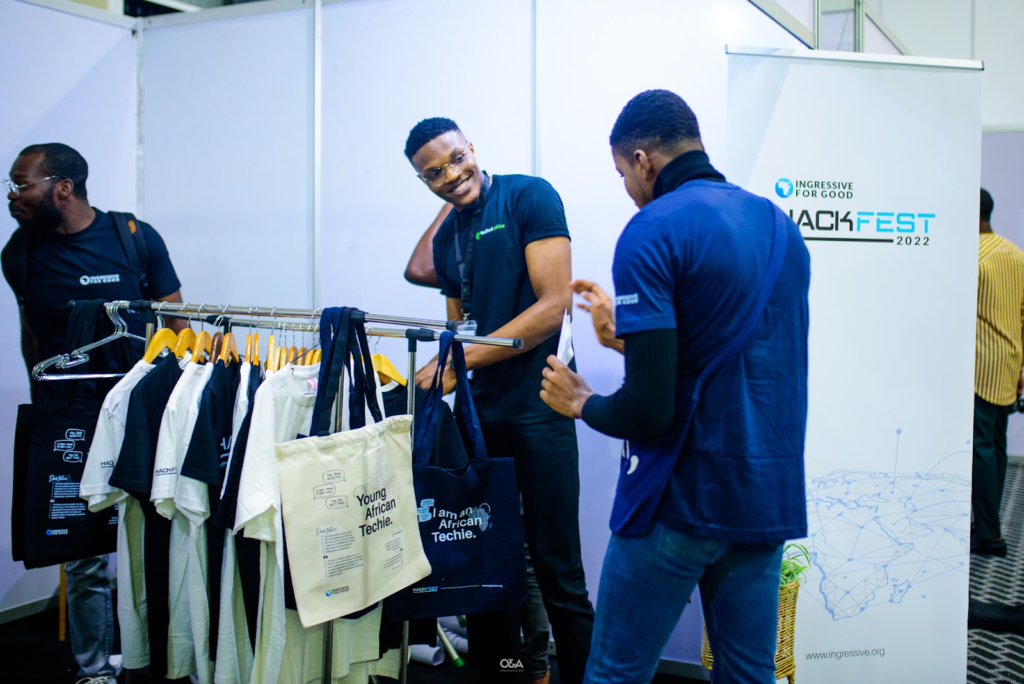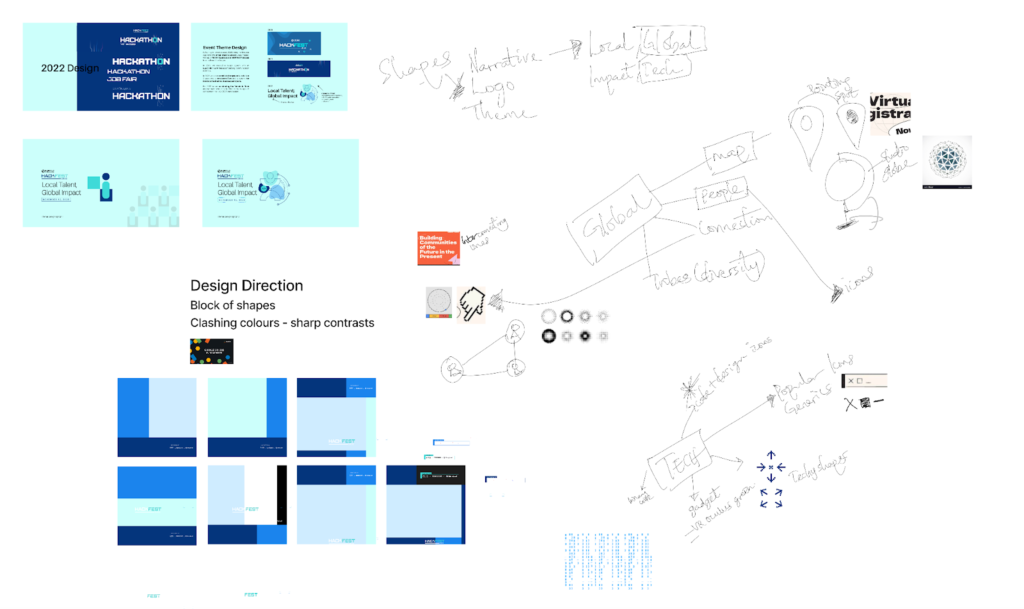Discover the essential elements of successful event branding and communication in this insightful guide. Learn from the experience of Ingressive for Good’s design team as they share valuable lessons, tips, and tricks from their branding journey during HACKFEST 2022. Whether you’re planning a large-scale event or a small gathering, this article provides practical advice to help you create a memorable and impactful experience for your community.
“Branding a large-scale event requires careful planning and execution but it is an excellent opportunity to showcase your brand directly to your community. It is experiential marketing at its finest.
An event is only as good as its brand and communication strategy as it helps to express your unique voice, attract your community, and create a memorable experience for them that lasts. At Ingressive for Good, we are about providing ACCESS, unleashing your potential, and community-backed growth. Our annual event, HACKFEST, was a great opportunity to showcase that.
Everything from our theme, design language, line up of sponsors, the caliber of speakers, experience points, ambience and coverage all contributed to demonstrating our essence. By developing a strong brand and communication strategy, you can express your unique voice, attract your target audience, and create a lasting and memorable experience. At Ingressive for Good, we successfully implemented these strategies for our annual event, HACKFEST 2022. Here, we share valuable lessons and tips from our design team to help you create a standout branding strategy for your own event.

HACKFEST 2022 was our first major physical event and we went all out with the branding, planning and communication for the event. Here are some lessons, tips and tricks from the Design team at I4G. We summarized our lessons into 3 headlines.
Start With a Clear Vision and Strategy
Before designing, ask yourself these key questions to guide your process.
- What are the goals and objectives of your event?
- How does this event directly connect with your audience, their needs and interests?
- What is the tone and what particular message do you want to convey?
It’s important to connect your brand’s strategy with the event to have a clear vision and objective for your event. By answering these questions upfront, you can ensure that you are consistent with your brand’s strategy and you can maximize the opportunity this event presents.
With HACKFEST, our answer to these questions was that we needed an opportunity to engage our vibrant community in person and give them a feel of what they have experienced with us virtually. We wanted them to feel like they belonged to a real community and are relevant to the global tech ecosystem, hence our theme; No Techies Left Behind”.
Create a Strong Visual Identity
On getting clarity on our goals, we were saddled with the task of creating an identity suitable to our community, something that they would easily relate to and connect with.
Our director of communications, Blessing Abeng, iterated a question in our heads, “what is that thing that will be consistent across all visuals?” Our answer to this was “Narrative Typography”.

Your event’s visual identity speaks for the brand as its visual language. It includes elements like logos, color schemes, fonts, and campaign designs. Your visual identity should be unique, memorable, and reflective of your event’s values and theme. This is usually the fun part of the process because here we had the opportunity to develop concepts based on the event’s theme and decide on fonts, styles and the overall look and feel of the identity we wanted.
When designing your Visual Identity, consider how it will appear across different mediums, such as websites, social media, print materials, and signage. Consistency is key to creating a cohesive and recognisable brand.

Systems and Templates
Event campaigns could run for months and requests are usually endless up until the event is over. On the good side, most of these requests are often repetitive such as Promotion designs, key announcements, countdowns, sponsor posts, speakers showcases etc.
Asides from the requests, there are key unavoidable elements in every event campaign like speakers, sponsors, naming, logo collaborations, panel sessions and topics. Depending on the type of event, if you can identify your core unavoidable elements at the beginning, you will save yourself a lot of time by creating systems and templates for each element that you can repeat throughout the campaign period. Doing this will save time, prevent creative blocks and help you remain consistent and communicate clearly.

A little extra
These are some tips that helped us in creating the design system;
Research and Brainstorming:
We collated ideas, sketches and visual references from similar events to create a mood board to visually inspire and guide us. Events like Google’s IO, Canva’s Create, and Goalkeepers picked our interest.

Design sprints and Communication:
As a team, we over-communicated and iterated on every idea together because we needed to be in sync and aligned to achieve our goals faster. We had design sprints on our own and with the larger communications team to make sure we were thinking alike.
Critiquing and collaboration as a team:
We stepped out of our design bubble from sometimes to take and apply feedback from the larger team to give us different perspectives and brand-centered critiques of our design solutions. This process also created a sense of ownership of the event in everyone involved.
These were the core lessons and tips that got us through developing HACKFEST 2022 and we hope they also help you in creating a memorable event for your community.

